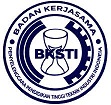Determination of stock in inbound logistics based on optimal order quantity through Smart Application for Chicken Egg Stock (SAFCES)
Abstract
Keywords
Full Text:
PDFReferences
J. Barros, P. Cortez, and M. S. Carvalho, “A systematic literature review about dimensioning safety stock under uncertainties and risks in the procurement process,” Oper. Res. Perspect., vol. 8, p. 100192, 2021.
M. Shafiee, Y. Zare-Mehrjerdi, K. Govindan, and S. Dastgoshade, “A causality analysis of risks to perishable product supply chain networks during the COVID-19 outbreak era: An extended DEMATEL method under Pythagorean fuzzy environment,” Transp. Res. Part E Logist. Transp. Rev., vol. 163, p. 102759, 2022.
T. Yamamoto, S. Merciai, J. M. Mogollón, and A. Tukker, “The role of recycling in alleviating supply chain risk--Insights from a stock-flow perspective using a hybrid input-output database,” Resour. Conserv. Recycl., vol. 185, p. 106474, 2022.
P. Berling, L. Johansson, and J. Marklund, “Controlling inventories in omni/multi-channel distribution systems with variable customer order-sizes,” Omega, vol. 114, p. 102745, 2023.
J. Considine, P. Galkin, and A. Aldayel, “Inventories and the term structure of oil prices: A complex relationship,” Resour. Policy, vol. 77, p. 102657, 2022.
J. F. Ke, J. Otto, and C. Han, “Customer-Country diversification and inventory efficiency: Comparative evidence from the manufacturing sector during the pre-pandemic and the COVID-19 pandemic periods,” J. Bus. Res., vol. 148, pp. 292–303, 2022.
Y. Lee, V. M. Charitopoulos, K. Thyagarajan, I. Morris, J. M. Pinto, and L. G. Papageorgiou, “Integrated production and inventory routing planning of oxygen supply chains,” Chem. Eng. Res. Des., vol. 186, pp. 97–111, 2022.
L. A. San-José, J. Sicilia, V. Pando, and D. Alcaide-López-de-Pablo, “An inventory system with time-dependent demand and partial backordering under return on inventory investment maximization,” Comput. & Oper. Res., vol. 145, p. 105861, 2022.
A. S. Eruguz, E. Sahin, Z. Jemai, and Y. Dallery, “A comprehensive survey of guaranteed-service models for multi-echelon inventory optimization,” Int. J. Prod. Econ., vol. 172, pp. 110–125, 2016.
B. Amirjabbari and N. Bhuiyan, “Determining supply chain safety stock level and location,” J. Ind. Eng. Manag., vol. 7, no. 1, pp. 42–71, 2014, doi: 10.3926/jiem.543.
Y. Boulaksil, “Safety stock placement in supply chains with demand forecast updates,” Oper. Res. Perspect., vol. 3, pp. 27–31, 2016.
H. Liao and Q. Deng, “EES-EOQ model with uncertain acquisition quantity and market demand in dedicated or combined remanufacturing systems,” Appl. Math. Model., vol. 64, pp. 135–167, 2018.
B. Rabta, “An Economic Order Quantity inventory model for a product with a circular economy indicator,” Comput. & Ind. Eng., vol. 140, p. 106215, 2020.
S. Tiwari, L. E. Cárdenas-Barrón, A. A. Shaikh, and M. Goh, “Retailer’s optimal ordering policy for deteriorating items under order-size dependent trade credit and complete backlogging,” Comput. & Ind. Eng., vol. 139, p. 105559, 2020.
O. Z. Mustapha, M. Ali, Y. F. Hu, and R. A. Abd-Alhameed, “Service-aware LSP selection with fuzzy based packet scheduling scheme for non-real time traffics,” Int. J. Informatics Commun. Technol., vol. 10, no. 2, p. 126, 2021, doi: 10.11591/ijict.v10i2.pp126-139.
S. Sinha, N. M. Modak, and S. S. Sana, “An entropic order quantity inventory model for quality assessment considering price sensitive demand,” Opsearch, vol. 57, no. 1, pp. 88–103, 2020.
J. B. Velandia, C. E. R. Calderón, and D. D. L. Lara, “Optimization techniques on fuzzy inference systems to detect Xanthomonas campestris disease,” Int. J. Electr. Comput. Eng., vol. 11, no. 4, pp. 3510–3518, 2021, doi: 10.11591/ijece.v11i4.pp3510-3518.
V. A. Wardhany, H. Yuliandoko, A. J. Wildan, T. Iskandar, and M. Udin, “Fuzzy logic decission maker for automatic feeder and water quality monitoring system,” Int. J. Informatics Commun. Technol., vol. 10, no. 1, pp. 37–45, 2021.
W. Hassan, T.-S. Chou, O. Tamer, J. Pickard, P. Appiah-Kubi, and L. Pagliari, “Cloud computing survey on services, enhancements and challenges in the era of machine learning and data science,” Int. J. Informatics Commun. Technol., vol. 9, no. 2, p. 117, 2020, doi: 10.11591/ijict.v9i2.pp117-139.
S. Mullainathan and J. Spiess, “Machine learning: An applied econometric approach,” J. Econ. Perspect., vol. 31, no. 2, pp. 87–106, 2017, doi: 10.1257/jep.31.2.87.
Z. T. Wilson and N. V Sahinidis, “The ALAMO approach to machine learning,” Comput. & Chem. Eng., vol. 106, pp. 785–795, 2017.
A. B., K. Krishi, M. M., M. Daaniyaal, and A. H. S., “Hand gesture recognition using machine learning algorithms,” Comput. Sci. Inf. Technol., vol. 1, no. 3, pp. 116–120, 2020, doi: 10.11591/csit.v1i3.p116-120.
T. Alam, “Performance evaluation of blockchains in the internet of things,” Comput. Sci. Inf. Technol., vol. 1, no. 3, pp. 93–97, 2020, doi: 10.11591/csit.v1i3.p93-97.
Mahesh Batta, “Machine Learning Algorithms - A Review,” Int. J. Sci. Res., no. January 2019, 2020, doi: 10.21275/ART20203995.
J. Pradesi and H. C. Prabowo, “Planning for Raw Material Inventory Needs at PT. X Semarang with Min-Max Method,” Int. J. Comput. Inf. Syst., vol. 2, no. 3, pp. 114–117, 2021, doi: 10.29040/ijcis.v2i3.62.
B. Wu, T. Cheng, T. L. Yip, and Y. Wang, “Fuzzy logic based dynamic decision-making system for intelligent navigation strategy within inland traffic separation schemes,” Ocean Eng., vol. 197, p. 106909, 2020.
S. K. Mangla, S. Luthra, and S. Jakhar, “Benchmarking the risk assessment in green supply chain using fuzzy approach to FMEA: Insights from an Indian case study,” Benchmarking An Int. J., vol. 25, no. 8, pp. 2660–2687, 2018.
Q. Zhou, W. Wu, D. Liu, K. Li, and Q. Qiao, “Estimation of corrosion failure likelihood of oil and gas pipeline based on fuzzy logic approach,” EFA, vol. 70, pp. 48–55, 2016, doi: 10.1016/j.engfailanal.2016.07.014.
S. H. Santosa, A. P. Hidayat, and R. Siskandar, “Safea application design on determining the optimal order quantity of chicken eggs based on fuzzy logic,” IAES Int. J. Artif. Intell., vol. 10, no. 4, pp. 858–871, 2021, doi: 10.11591/ijai.v10.i4.pp858-871.
G. Hu, E. Bakhtavar, K. Hewage, M. Mohseni, and R. Sadiq, “Heavy metals risk assessment in drinking water: An integrated probabilistic-fuzzy approach,” J. Environ. Manage., vol. 250, p. 109514, 2019.
Z. Pezeshki and S. M. Mazinani, “Comparison of artificial neural networks, fuzzy logic and neuro fuzzy for predicting optimization of building thermal consumption: a survey,” Artif. Intell. Rev., vol. 52, no. 1, pp. 495–525, 2019.
S. Hendiani and M. Bagherpour, “Developing an integrated index to assess social sustainability in construction industry using fuzzy logic,” J. Clean. Prod., vol. 230, pp. 647–662, 2019, doi: 10.1016/j.jclepro.2019.05.055.
N. T. Tran, N. Le Chau, and T.-P. Dao, “An effective hybrid approach of desirability, fuzzy logic, ANFIS and LAPO algorithm for optimizing compliant mechanism,” Eng. Comput., vol. 37, pp. 2591–2621, 2021.
H. Ahmadi, M. Gholamzadeh, L. Shahmoradi, M. Nilashi, and P. Rashvand, “Diseases diagnosis using fuzzy logic methods: A systematic and meta-analysis review,” Comput. Methods Programs Biomed., vol. 161, pp. 145–172, 2018, doi: 10.1016/j.cmpb.2018.04.013.
E. Pourjavad and A. Shahin, “The Application of Mamdani Fuzzy Inference System in Evaluating Green Supply Chain Management Performance,” Int. J. Fuzzy Syst., vol. 20, no. 3, pp. 901–912, 2018, doi: 10.1007/s40815-017-0378-y.
DOI: http://dx.doi.org/10.62870/jiss.v11i1.30887
Refbacks
- There are currently no refbacks.
 is supported by
is supported by








